At this year's Comic Arts Brooklyn, two of comics most influential curators examined the legacy of Winsor McCay's LITTLE NEMO IN SLUMBERLAND and the development of comics, from the vulgar days of yore to the modern gentile shores.
Viewing: Blog Posts Tagged with: art spiegelman, Most Recent at Top [Help]
Results 1 - 25 of 26
Blog: PW -The Beat (Login to Add to MyJacketFlap)
JacketFlap tags: Francoise Mouly, art spiegelman, Maus, little nemo, Winsor McCay, Top News, Brooklyn Comics and Graphics Festival, Dream Another Dream, Add a tag
Blog: PW -The Beat (Login to Add to MyJacketFlap)
JacketFlap tags: Comics, Process, Topps, art spiegelman, PostScript, Garbage Pail Kids, Digital Comics, Top News, John Pound, Add a tag
Last month, Wired posted an update about John Pound, the co-creator of the Garbage Pail Kids trading cards, and how he uses somewhat archaic software to create random comics! Many comics cognoscenti know that Art Spiegelman created the Garbage Pails Kids concept, as well as that of Wacky Packages. What most don’t know is that […]
Blog: Galley Cat (Mediabistro) (Login to Add to MyJacketFlap)
JacketFlap tags: Libraries, Pablo Neruda, Laurie Halse Anderson, Library of Congress, Amy Tan, Mary Oliver, Art Spiegelman, Walter Isaacson, Sandra L. Pinkney, Elie Wiesel, Wendell Van Draanen, Add a tag
 Have you ever written a letter to one of your favorite authors?
Have you ever written a letter to one of your favorite authors?
More than 50,000 young readers (grades 4 through 12) participated in the Library of Congress’ Letters About Literature program. Each participant was tasked with writing a letter to an author (living or deceased) about how one of their books affected them.
According to the press release, this “initiative is a reading-promotion program of the Center for the Book, with the goal of instilling a lifelong love of reading in the nation’s youth.” Below, we’ve posted the full list of winners and honors.
Level 1 (Grades 4 to 6)
National Prize: Gerel Sanzhikov of New Jersey’s letter focused on The Running Dream by Wendell Van Draanen.
National Honor Award: Chelsea Brown of Virginia’s letter focused on Shades of Black by Sandra L. Pinkney.
Level 2 (Grades 7 to 8)
National Prize: Gabriel Ferris of Maine’s letter focused on Steve Jobs by Walter Isaacson.
National Honor Award (three-way tie): Emmy Goyette of New Hampshire’s letter focused on Speak by Laurie Halse Anderson.
Jonathan Hoff of New Jersey’s letter focused on Maus by Art Spiegelman.
Julianna Gorman of Maryland’s letter focused on Night by Elie Wiesel.
Level 3 (Grades 9 to 12)
National Prize: Aidan Kingwell of Illinois’ letter focused on the Mary Oliver poem \"When Death Comes.\"
National Honor Award (tied between two participants): Lisa Le of the District of Columbia’s focused on The Joy Luck Club by Amy Tan.
Hannah DesChamp of Oregon’s letter focused on the Pablo Neruda poem \"I Do Not Love You Except Because I Love You.\"
Add a CommentBlog: Neil Gaiman (Login to Add to MyJacketFlap)
JacketFlap tags: Life, art spiegelman, drawing the undrawable, waving or drowning, Saying the unsayable, The New Statesman, Add a tag
We actually can discuss the unsayable. We are doing it here, in this issue. In that sense, “unsayable” is almost an oxymoron.
We can talk about something without actually showing it. We can discuss “drawing Mohammed”, we can write entire books if we wish about the traditions involved in representing Mohammed, the problems inherent in it, the issues of power, offense and violence involved, and nobody will try to kill us for writing it.
Once you draw the picture, it’s a different story: when you “draw the undrawable”. The moment that you draw a picture that shows something transgressive, even if you are simply commenting on it, you have drawn it. (In 2010 Seattle cartoonist Molly Norris attempted to satirise and comment on the issues involved in representing the prophet in a humourous way, by drawing a cotton reel, a cup, a domino, a purse, a cherry and a pasta box, each claiming to be an image of Mohammed. She was placed on an Al-Quaida deathlist, and has been in hiding for four years.)
Images that shock or repulse us have power, in a way that words will not.
Amanda walked with artist Art Spiegelman through downtown New York for an afternoon, getting schooled in the long history of banned drawings, comics and the wake of the Charlie Hebdo assassinations. She and Art got Neil on the phone and for an hour discussed "see no evil” monkeys, people and stereotypes being burned at the stake, and how to represent offensive images without actually offending people. We wound up with the idea of Neil and Amanda trapped and drowning in their own speech bubbles. But Art wasn't happy with it.
The first cover design he actually showed us was a glorious depiction of a man drowning in a sea of shit, unable to say the word. It almost worked, but not quite. (We worried that people would think, not unreasonably, that this was the “we are all drowning in a sea of shit” issue.)
When he sent over the sketch of an angry woman bound, “see no evil” blindfolded, but still trying to swear through the happy-face on her ball gag, we knew we had our cover.
Blog: PW -The Beat (Login to Add to MyJacketFlap)
JacketFlap tags: Francoise Mouly, art spiegelman, Top News, MoCCA Fest 2015, charlie hebdo, Events, History, World Comics, Add a tag
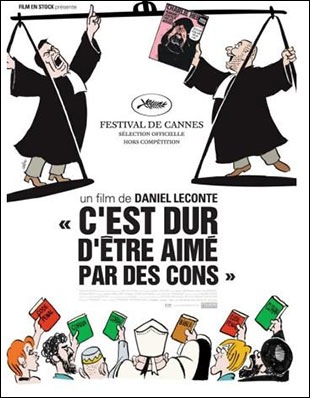
And another event, this one a screening of a documentary about one of Charlie Hebdo’s earlier controversies followed by a talk with Art Spigelman and Francoise Mouly:
With TOUGH BEING LOVED BY JERKS, director Daniel Leconte (Fidel Castro: L’enfance d’un chef) offers a real-time account of one of the most important trials in the 21st century and dives deep into the political, ideological and media-related stakes of the trial with all key participants. The film features lawyers, witnesses, the media, editorial conferences, demonstrations of support, as well as the reactions of the prosecutors and of Muslim countries. Given new relevance after the January 7, 2015, attacks at the Charlie Hebdo offices, which left 12 dead and 11 wounded, TOUGH BEING LOVED BY JERKS also features candid interviews (and rarely seen behind-the-scenes moments) with acclaimed Charlie Hebdo cartoonists, such as Cabu, Charb, Tignous and Wolinski, who died on January 7. (C) Kino Lorber
Followed by a conversation with Françoise Mouly and Art Spiegelman, moderated by Bill Kartalopoulos.
Location:
SVA Theater
333 West 23rd Street between 8th and 9th Ave.
Click here for directions
Ticket info in the link.
Blog: PW -The Beat (Login to Add to MyJacketFlap)
JacketFlap tags: Events, wordless, art spiegelman, Milt Gross, Top News, franz masereel, phillip johnston, Add a tag
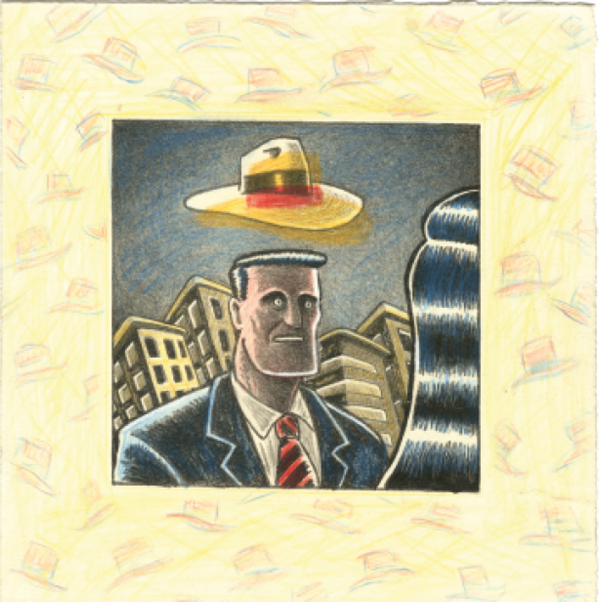
Wordless! is a collaboration between artist Art Spiegelman and musician Phillip Johnston—but it’s really about Frans Masereel, Lynd Ward, and Milt Gross. The evening—which I was fortunate to catch last year—involves the Johnston Sextet improvising over a slide show of the wordless comics of the above as set up by Spiegelman. And Art being Art, this is also a lucid, connection making journey through comics and art history, the oppressive woodcuts of Masereel eventually coming out in Spiegelman’s own work. And for you social history buffs, the continued theme of young women who are done in by their own society flouting desires—aka getting knocked up by some cad —provides an interesting window into the time period of these comics.
Wordless! was commissioned for the same Australian arts festival which saw the astonishing The Truth is a Cave in the Black Mountains by Neil Gaiman, Eddie Campbell and Fourplay.
Wordless! is quite an amazing piece of theater and while it’s been touring for a bit New Yorkers will have ONLY ONE MORE CHANCE TO SEE IT! And it’s this March 13th. Deets:
Art Spiegelman & Phillip Johnston’s
WORDLESS!
***
one performance only:
Friday, March 13, 7:30 pm. Miller TheaterColumbia University Theater 2960 Broadway (at 116th Street)
If you haven’t seen Wordless, do it. You’ll kick yourself forever for not seeing it when you had the chance. And here’s a video trailer in you need any more convincing.
Blog: Galley Cat (Mediabistro) (Login to Add to MyJacketFlap)
JacketFlap tags: Censorship, Neil Gaiman, Authors, Oliver Jeffers, Salman Rushdie, Art Spiegelman, Add a tag
 The Satanic Verses novelist Salman Rushdie has issued a statement about the attacks on the Paris-based offices of the Charlie Hebdo newspaper. It was originally publicized on the English PEN website, but it has since been taken down. The Wall Street Journal has re-posted it in its entirety; here’s an excerpt:
The Satanic Verses novelist Salman Rushdie has issued a statement about the attacks on the Paris-based offices of the Charlie Hebdo newspaper. It was originally publicized on the English PEN website, but it has since been taken down. The Wall Street Journal has re-posted it in its entirety; here’s an excerpt:
“I stand with Charlie Hebdo, as we all must, to defend the art of satire, which has always been a force for liberty and against tyranny, dishonesty and stupidity. ‘Respect for religion’ has become a code phrase meaning ‘fear of religion.’ Religions, like all other ideas, deserve criticism, satire, and, yes, our fearless disrespect.”
Rushdie has not been the only member of the literary community to speak out on this issue. Last night, American Gods novelist Neil Gaiman revealed on Facebook that he agrees with the sentiments of Rushdie’s piece. On that same night, The Day The Crayons Quit illustrator Oliver Jeffers and Maus creator Art Spiegelman participated in a vigil in the Union Square area of New York City. (via The Huffington Post)
New Career Opportunities Daily: The best jobs in media.
Add a CommentBlog: PW -The Beat (Login to Add to MyJacketFlap)
JacketFlap tags: Graphic Novels, Benefits, PEN America, art spiegelman, paul auster, city of glass, David Mazzucchelli, Top News, paul karasik, Add a tag
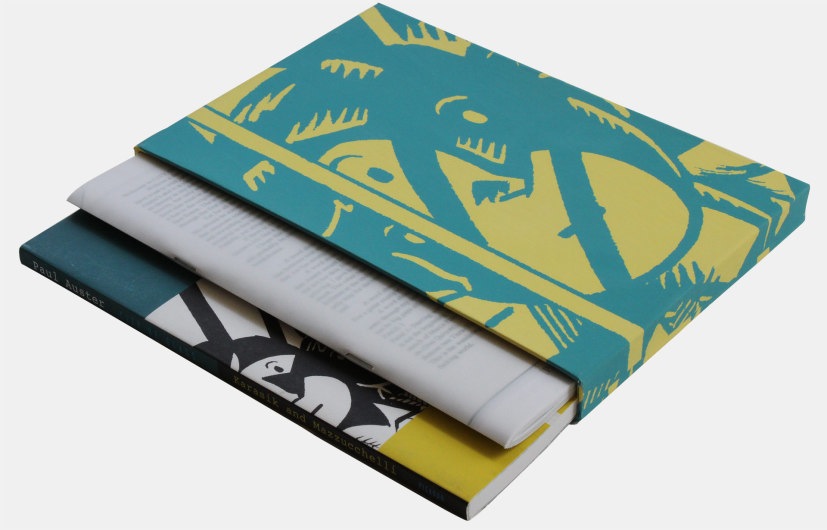
The US branch of the international literary organization PEN America is holding an auction of “Firest EDitions/Second Thoughts” tpo help support its mission of freedom of expression. The auction, to be held at Christies, includes first editions of various famed books annotated and signed by the origianl authors. Among the works p for bid on December 2nd, City of Glass: The Graphic Novel, in a special copy signed by original author Paul Auster and adapters Paul Karasik, David Mazzucchelli and Art Spiegelman.
The book is often considered a landmark of showing how the comics medium can transform even a celebrated literary work into a new and powerful mode of storytelling. A special panel spotlight on the book was held at CAB 2013.
And there’s video….
Blog: PW -The Beat (Login to Add to MyJacketFlap)
JacketFlap tags: Art, art spiegelman, Dean Haspiel, Jillian Tamaki, roz chast, David Mazzucchelli, Top News, john pham, Keren Katz, CAFs, Breakdown Press, z2 comics, gary groth, Comic Arts Brooklyn, raymond pettibon, CAB 2014, annie koyama, austin english, Add a tag
The Beat took pictures at CAB 2014! Some of them are Hipstamatic. Live with it. This was a good show, as usual. I came back with a bag full of books and immediately started reading them, one of the virtues of the home show. Although jam packed the show was surmountable, and I thought I would go once around the room and take photos of every one so I would have good file photos for when someone wins the Nobel Prize or marries Taylor Swift. This plan did not go as well as anticipated as you will see.

The cotillion for young cartoonists was arranged by experience. It takes a few years to get to tyro.
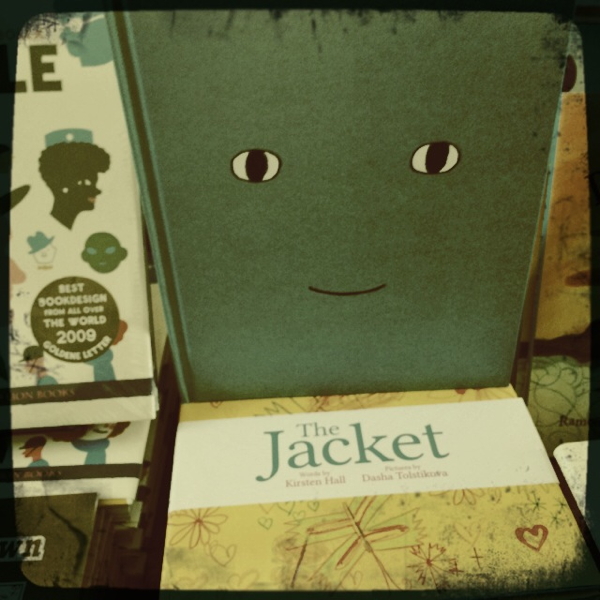
This book, The Jacket, by Kristen Hall and Dasha Tolstikova is lovely. Published by Enchanted Lion.

Enchanted Lion publisher Claudia Z. Bedrick on the right, I forgot the young fellow’s name alas.

That’s Laura Lannes on the left, cartoonist of the mini comic The Basil Plant which got a rave review on the Comics Journal the other day which had about 200 times more words than the comics. but sometimes that’s how it works. She’s good! On the right is…another cartoonist from the Paper Rocket studio whose hand cleverly covered his name badge. I’m really awful with names, people.

Fantagraphics publisher Gary Groth spring into action as Paul Karasik looks on and Olivier Schwauren sketches away. This show was action packed!
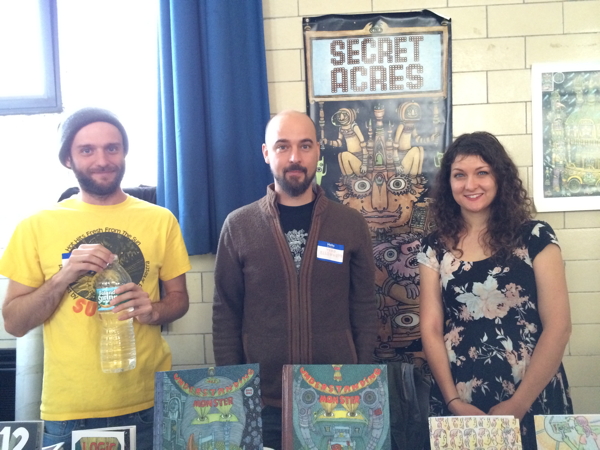
Secret Acres creators. One of them is Theo Elsworth. Help me out here, people!
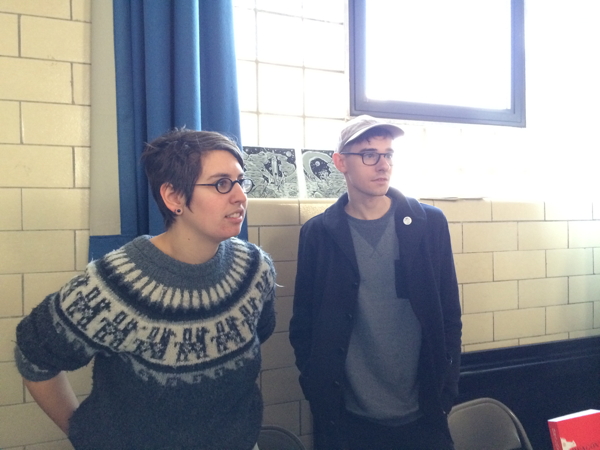
Sophie Yanow and Sam Alden are shocked to see all the action at the show. These guys have moved beyond Tyro class even!

People looked at comics sometimes buying them.
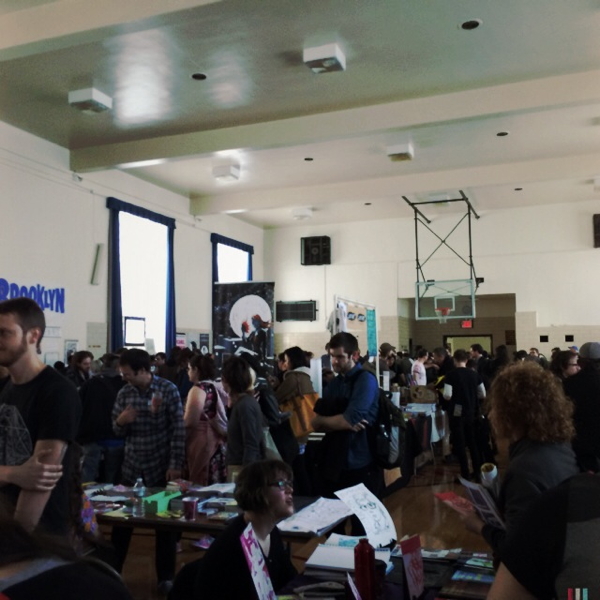
I was trying out this new Hipstamatic filter I just bought. A little too blue?
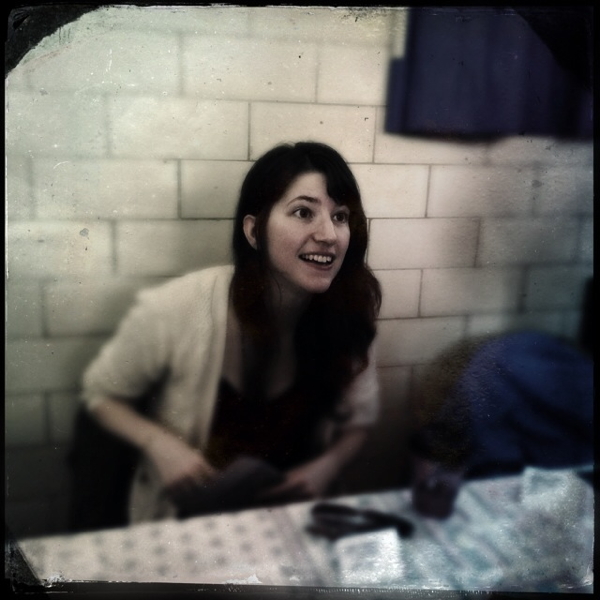
The animated Leslie Stein.
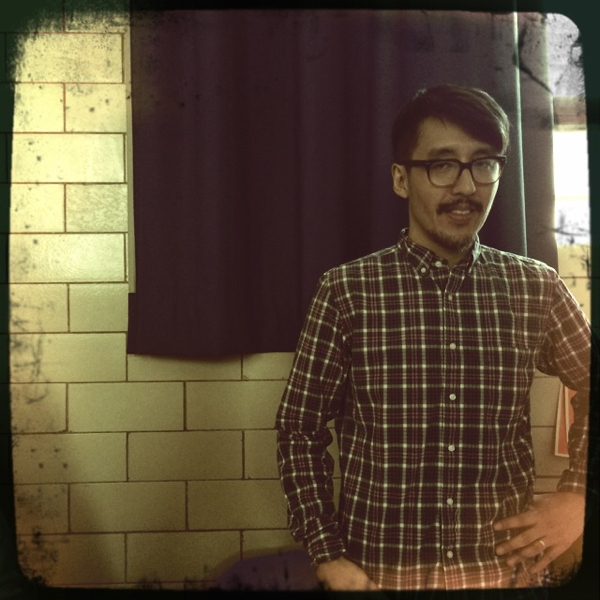
John Pham was at the show! I didn’t even know he was going to be there!
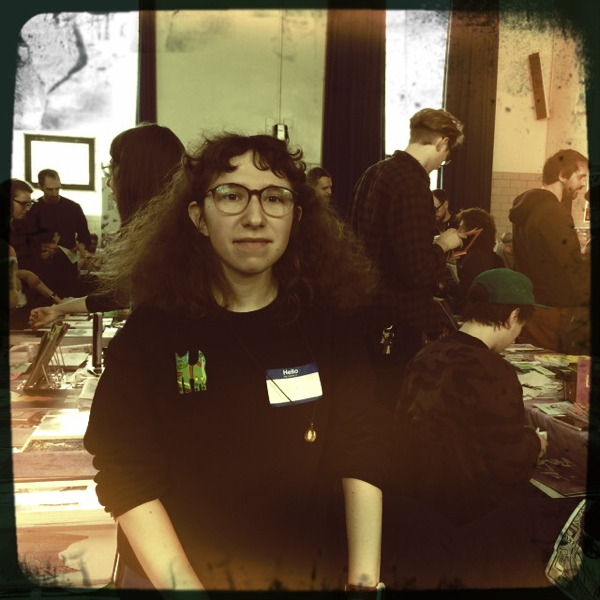
The mad talented Lala Albert. Her new comic from Breakdown Press was a sellout.
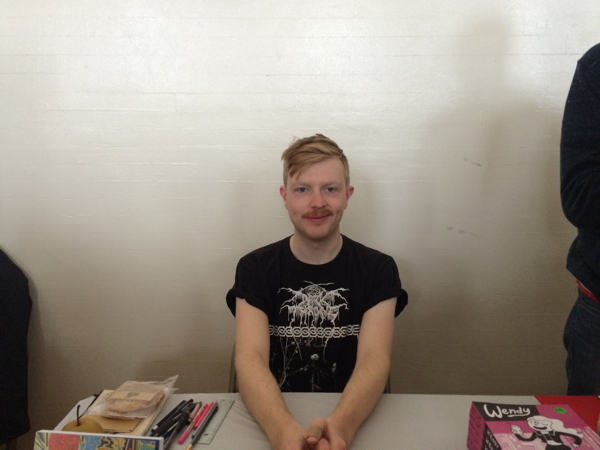
Patrick Kyle, returned from his tour more or less intact.

Dean Haspiel and Z2 Publisher Josh Frankel.

Nick Bertozzi is chatting to SVA’s Keith Mayerson, I believe, That’s David Mazzucchelli in the hat but don’t worry you’ll get a better look at that later. Bertozzi has developed quite a varied shelf of books. I adore his latest one, Shackleton
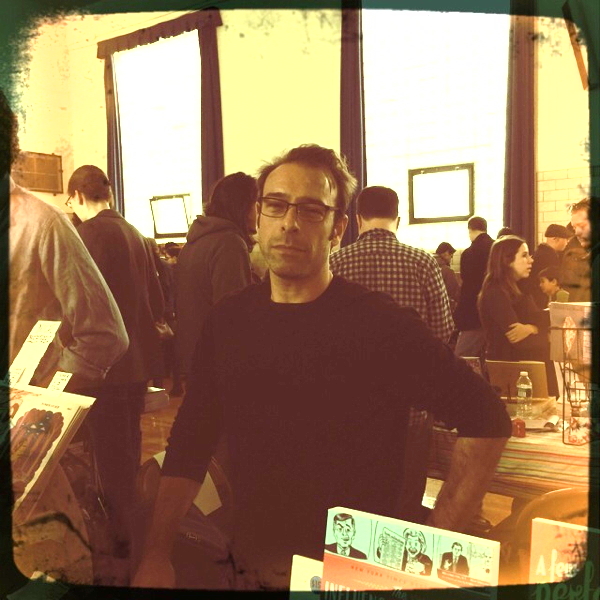
Gregory Benton of Hang Dai and Target.

Jillian Tamaki, Keren Katz and Mazzucchelli. David and I embarrassed Jillian by telling her how amazing her work in This One Summer is, and then David explained how tiny gestures can changes every drawing. A collection of Jillian’s funny and painful SuperMutant Magic Academy is coming in the Spring from D&Q.

I know this isn’t a very good photo, but CAB is full of magical moments like Keren Katz yakking with Ben Katchor while James Romberger and Marguerite van Cook stand nearby.

I grabbed a bite with tireless Torsten Adair at this little sandwich shop called re.Union which was around the corner from the church. Their sandwiches were JAMMIN’ but everyone turned backlit. Scott Eder of the Scott Eder Gallery was at the next table and we passed a pleasant half hour or so talking about shows and art.
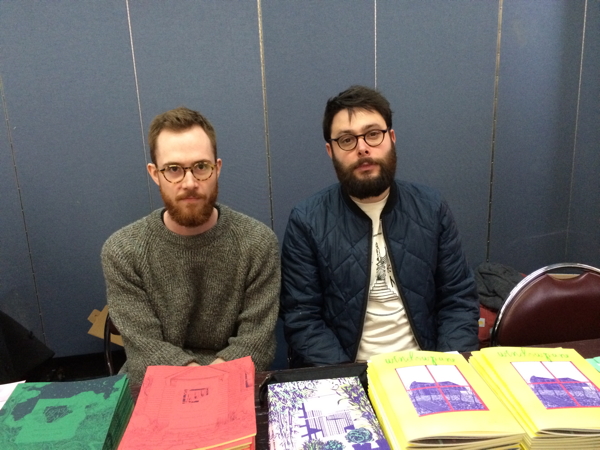
Here’s the Breakdown Press gang, which is, I believe Simon Hacking and Tom Oldham. Breakdown is a small English publisher and they’ve put out works by Cossé, Conor Willumsen, Connor Stechschulte, Lala Albert, Joe Kessler and Seiichi Hayashi. They are kind of killing it. Seriously, loved every book I got from them. They also filled me in on some of the background of the UK’s fast growing indie scene. (Thought Bubble is already on!) I pointed out that once the English think something is cool, American hipsters have to go along, so all our hopes rest on these guys. They also told me a possibly apocryphal story about a cartoonist who had spent the night on a park bench and still managed to make a mini comic in the process.

Karl Stevens! He’s backed by Sam Henderson.

Action Austin English! Those Domino Books people totally use a hurry up offense.

Of course an actual wedding was going on at the church. What would a comics show be without a wedding nearby?
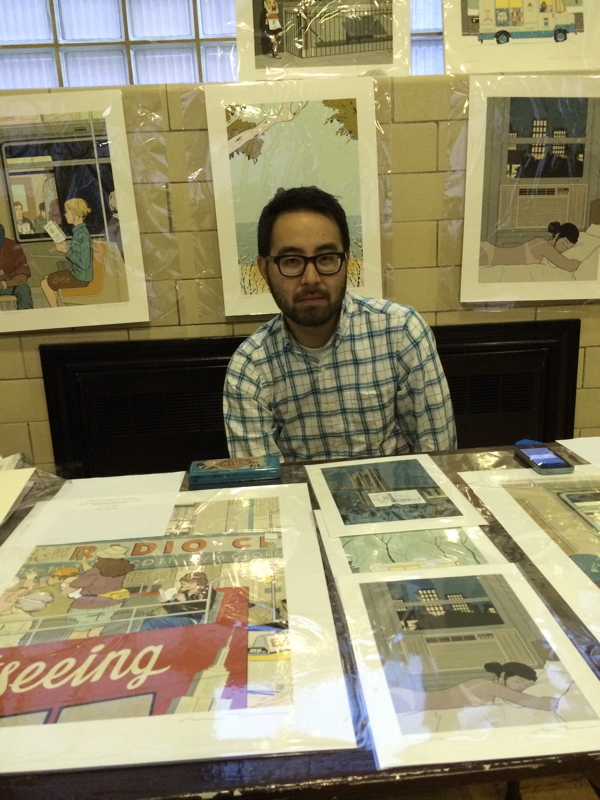
Adrian Tomine. A new issue of OPtic Nerve is on tap for 2015 he told me.
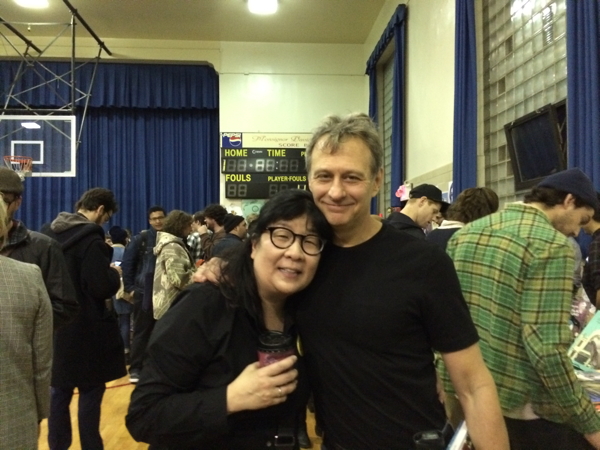
Annie Koyama and Gary Groth exemplify the love that is CAB.
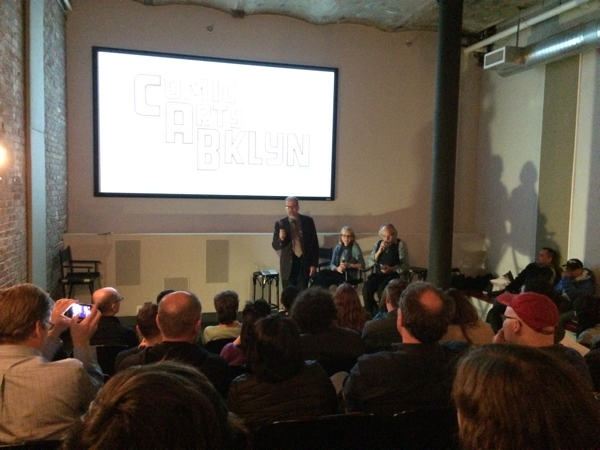
Flash Forward to Day 2! There was some confusion over people thinking that there would be books for sale on Sunday, but there weren’t Only panels. Here’s Paul Karasik talking to Art Spiegelman and Roz Chast. This was a blockbuster panel by any definition, and I love Paul Karasik, but I kind of wish more had been devoted to the two talking about their parents. I don’t mean to gripe. Karasik put together a marvelous slideshow of both their work and of course both Chast and Spiegelman were witty and wonderful.
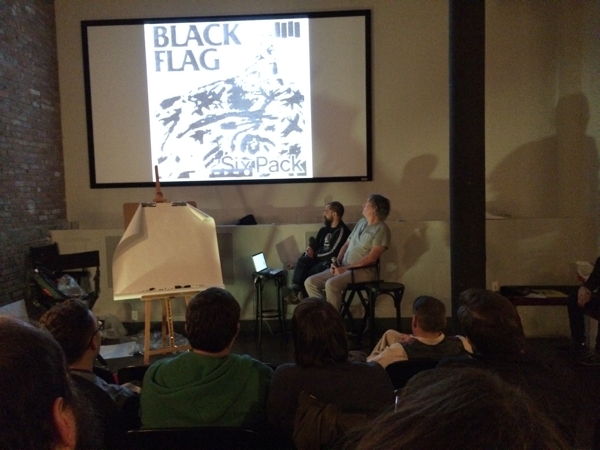
Then Josh Bayer interviewed Raymond Pettibon, the famed punk artist. This was a priceless, you-had-to-be-there moment as Bayer would ask a question and Pettibon would go off on an amazing rant about something, every line quotable. (I put a few really goods ones on Twitter.) It was a pretty unstructured talk but Bayer knows Pettibon well and quickly rushed through a slideshow that included work by Harold Gray and Jack Kirby, both obvious influences. Petibon clearly has comics hopes and dreams (Caniff and Frank Robbins were also cited as influences.) but luckily came up at a time when someone of his talents could make a ton of money doing commercial art and selling paintings.
If I may shift into diary mode here for a moment (I wasn’t already?) I experienced one of those weird time circles. Back when I lived in LA I went to a blockbuster show at MOCA that included Robert Williams, Pettibon, and Manuel Ocampo among others. It was called Helter Skelter: LA Art in the 90s, and it was a pretty incredible show, I have to say. The work of Pettibon and Ocampo and Williams very clearly referenced comics imagery in a respectful way. This was long before comics were as accepted as they are now, but I saw clear flashes of it back then. A few months later I was at that cafe in Silverlake we all used to hang out at (Jeebus what was it called?) with Phil Yeh and Alfredo Alcala and Ocampo and his fellow Filipino art crowd, because it turned out Ocampo idolized Alcala and the other cartoonists. Anyway flash forward 24 years, and Bayer asked Pettibon if he liked the Filipino comics school, and he said “Yeah, Alcala and…” So, see, everyone knows every one!
I saw Robert Boyd at the show and he was taking notes at this presentation. I look forward to his notes on the event because he knows a lot more about art than I do.
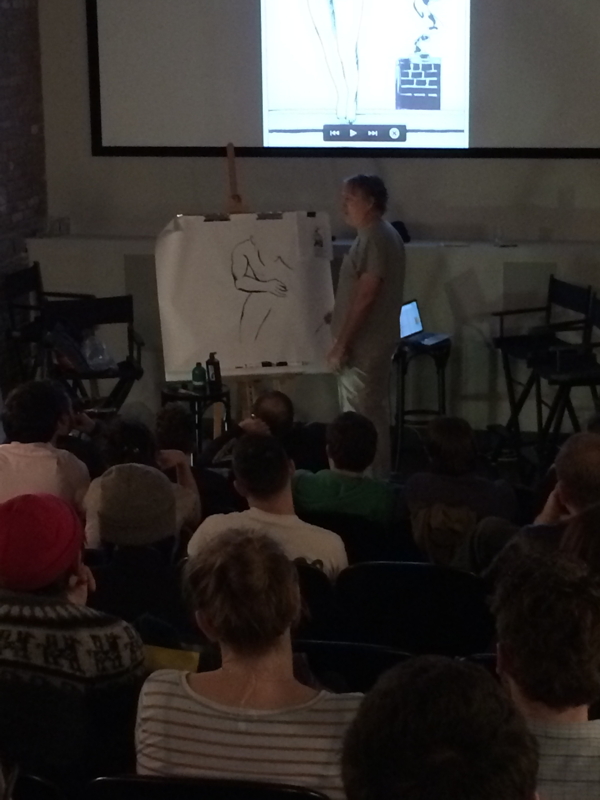
For a finale, Pettibon did a live drawing based on a Jack Kirby drawing of Spider-Man. It was awesome. CAB was awesome.
You can see the finished drawing here. WARNING: NOT SAFE FOR WORK! REPEAT NOT SAFE FOR WORK!
Blog: Galley Cat (Mediabistro) (Login to Add to MyJacketFlap)
JacketFlap tags: Events, Art Spiegelman, Add a tag
 The Art Gallery of Ontario (AGO) will host “Art Spiegelman’s CO-MIX: A Retrospective.”
The Art Gallery of Ontario (AGO) will host “Art Spiegelman’s CO-MIX: A Retrospective.”
Visitors will see 300 different items such as trading cards, magazine covers, and original manuscripts of the comic Maus. This art show will run from December 20, 2014 until March 14, 2015.
Here’s more from the AGO website: “Art Spiegelman’s CO-MIX: A Retrospective was organized for the 2012 Festival International de la Bande Dessinée in Angoulême, France, by Rina Zavagli-Mattotti and is presented at the AGO in collaboration with The Jewish Museum, New York. The exhibition has travelled to the Library of the Centre Pompidou, Paris; the Museum Ludwig, Cologne; The Jewish Museum, New York; and the Vancouver Art Gallery. The AGO is the exhibition’s only Toronto venue.”
New Career Opportunities Daily: The best jobs in media.
Add a CommentBlog: Galley Cat (Mediabistro) (Login to Add to MyJacketFlap)
JacketFlap tags: Neil Gaiman, Authors, Comicbookland, Francoise Mouly, Art Spiegelman, Amanda Palmer, TED Talks, Add a tag
Newbery Medal winner Neil Gaiman sat with TOON Books publisher Françoise Mouly and Pulitzer Prize winner Art Spiegelman to discuss his new graphic novel, Hansel and Gretel. The video embedded above features the entire conversation.
Gaiman confesses that the “Hansel and Gretel” fairy tale really frightens him, but he does believe that children must be exposed to dark stories. Gaiman thinks that “if you are protected from dark things then you have no protection of, knowledge of, or understanding of dark things when they show up. I think it is really important to show dark things to kids—and in the showing, to also show that dark things can be beaten, that you have power.”
New Career Opportunities Daily: The best jobs in media.
Add a CommentBlog: PW -The Beat (Login to Add to MyJacketFlap)
JacketFlap tags: art spiegelman, roz chast, Top News, Charles Burns, CAFs, Comic Arts Brooklyn, raymond pettibon, CAB 2014, paul karasik, Add a tag
As we noted a few days ago, Comic Arts Brooklyn, the final comics related event on the NYC calendar, will expand to two days this year, with exhibits on Saturday, November 8, and programming on Sunday November 9th, at a new venue, the Wythe Hotel. Programming director Paul Karasik has just released the lineup, and the news that, just like at NYCC, the panel room will be cleared between panels! Line up now for your Raymond Pettibon wristband!
The line-up is pretty damned solid, with em emphasis on acknowledged art stars. I imagine the marquis event will be the Chast/Spiegelman conversation, but while camping out is not allowed it would be appropriate because it’s all belly meat here.
All programming will occur on November 9, 2014 at the Wythe Hotel in Williamsburg.
PLEASE NOTE: Each presentation is free to the public on a first come, first served basis. In order to accommodate interest in each panel, the audience must clear the room at the conclusion of each talk. Please plan accordingly.
Al Jaffee Unfolded 11:00
Al Jaffee has drawn hundreds of features for the MAD Magazine but he is undoubtedly best known as the creator of the Mad Fold-In that he has drawn monthly since 1964. His originals will be on display concurrently at the Scott Eder Gallery in Brooklyn.
Charles Burns: Down the Black Hole 12:00
A retrospective of Burns’ work as an illustrator (Sub Pop, The Believer, The New Yorker) and as a cartoonist (Black Hole, Big Baby, RAW), with a focus on the recently released third book of his graphic novel trilogy, X’ed Out. (Burns will be interviewed by Paul Karasik.)
Tim Lane, Ben Marra, & Jim Rugg: Neo Noir 1:00
These three cartoonists love tough yeggs, mean streets, and femme fetales. All three have recent work evoking smoky, double-crossing noir. Each creator will present and discuss his own Gods of Noir. (Lane, Marra, and Rugg will be interviewed by Karen Green.)
Roz Chast and Art Spielgeman Talk About Something More Pleasant 2:00
Roz Chast’s cartoons are synonymous with the New Yorker. Her recent work, “Can’t We Talk About Something More Pleasant”, surprised her readers as a frank memoir about her parents’ final years. Art Spiegelman is best known for his masterwork, “MAUS”, but has recently surprised his readers with a musical, “Wordless”. Together they will surprise the audience by asking each other questions.
Aisha Franz, Lisa Hanawalt, and Jillian Tamaki: Cutting Edges 3:00
These three young artists represent three different approaches to comics-making and all are focused on making comics unlike anything you have seen before. Their deeply individualized approaches toward work and working will be discussed. (Franz, Hanawalt, & Tamaki will be interviewed by Alexandra Zsigmond.)
Richard McGuire is Here 4:00
Fans of cartoonist / children’s book author / illustrator / musician, Richard McGuire, have been waiting years for the publication of the book-length “Here”, which originally ran in RAW. The wait is over. (McGuire will be interviewed by Paul Karasik.)
Raymond Pettibon and the Comics 5:00
Pettibon came to prominence in the early 1980s in the southern California punk rock scene, creating posters and album art for Black Flag and other groups on SST Records. He has since gone on to international acclaim, earning several awards and exhibiting in major galleries and museums. (Pettibon will be interviewed by Josh Bayer.)
Blog: PW -The Beat (Login to Add to MyJacketFlap)
JacketFlap tags: Comic Arts Brooklyn, paulk karasik, raymond pettibon, art spiegelman, roz chast, Richard McGuire, Top News, Charles Burns, CAFs, Add a tag
Gabe Fowler, the main man behind Comic Arts Brooklyn, the late fall comics arts fest that traditionally caps off New Yorks comics year, will expand to days in 2014. Taking place November 8-9, the show will see exhibits at the usual place at the Mt Carmel Church on Saturday and on Sunday a complete track of programming at the Wythe Hotel, which is also located in Williamsburg.
Announced guests this year include Roz Chast, Richard McGuire, Raymond Pettibon and Art Spiegelman, but as you can see from the above poster,more guests have been added including Michael DeForge, Lisa Hanawalt, Julie Doucet (!!!!), Josh Bayer, Charles Burns, Aisha Franz, Al Jaffee, Tim Lane, Benjamin Marra, Jim Rugg and Olivier Schwauwen.
“We want to give more artists and exhibitors the opportunity to come to the presentations,” said Fowler in a statement, “Often the very people who want most to see creators speak are unable to attend. CAB wants to change that equation.”
Paul Karasik is curating the panels again this year. “We have some cool surprises about the specific panels to be announced in the coming weeks,” Karasik said in his own statement. “But, let’s just say for now, that if you are a Charles Burns fan, you might want to circle Sunday, November 9.”
I think the addition of a day of panels is a fine idea, somewhere between the Brooklyn Book Festival and olden days of SPX when Sunday was just panels and softball. The community of small press comics, so evident at SPX and TCAF, likes to hang out and enjoy one another’s company and a day of programming will act as a fine nexus for this.
Also, programming at CAB and it’s predecessor, BCGF, has always been a problem, as the programs are consistently packed. I missed last year’s CAB, but I understand people had to line up far in advance for the talk on City of Glass held at The Knitting Factory. A few years before the panels were held in the back room at a bar and NO ONE could get in. I realize this is yet another whole weekend given over to comics, but given the calibre of the comics and programming offered at CAB, it seems like a worthy sacrifice.
Blog: PW -The Beat (Login to Add to MyJacketFlap)
JacketFlap tags: Events, wordless, art spiegelman, rockwell kent, Top News, frans masereel, philip johnston, Add a tag
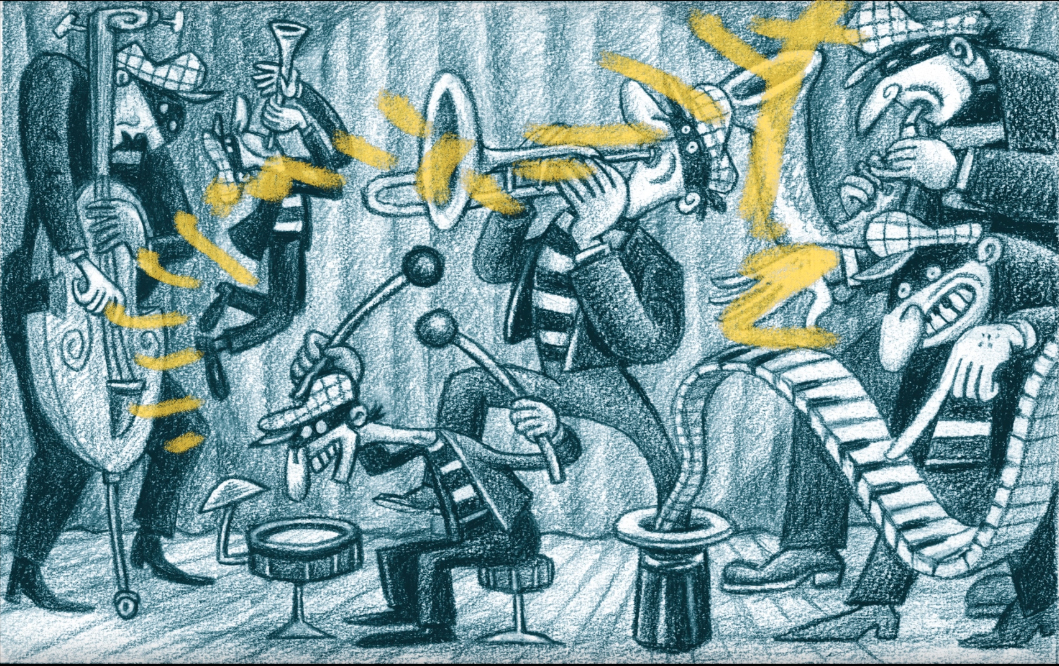
A few years ago, an Australian impresario named Jordan Verzar put together the Graphic Festival at the Sydney Opera House which included a dream list of multi-media comics projects, including the Neil Gaiman/Eddie Campbell/Fourplay String Quartet collaboration The Truth is a Cave in a Black Mountain and the Art Spiegelman/Phillip Johnston Sextet collaboration Wordless. I was lucky enough to see both of these when the came to the US earlier this year, and I’m happy to say that Wordless is touring the country, and may just come to a city near you. If it does, run run to see it!
“Wordless” is, ironically, not wordless at all, but Spiegelman narrating a history of the early, silent woodcut graphic novels of the first half of the 2oth century, works by artists like Frans Masereel, Lynd Ward, Milt Gross, Otto Nuckel, and Si Lewen. The projected comics are accompanied by improvised jazz styling by the Phillip Johnston Sextet, and the evening is full of information, music and the magic of art and storytelling. You can read more about it on a tumblr Spiegelman has set up, (Spiegelman tumbles, says the headline) and here’s an article from SFGate with more thoughts on the venture. And here are the dates:
Tour Details
Wednesday, October 8
Cleveland OH — Oberlin College
Friday, October 10
UC Berkeley, CA — Zellerbach Auditorium
Sunday, October 12
Seattle, WA — Seattle Theatre Group, Moore Theater
Wednesday, October 15
Los Angeles, CA — UCLA, Royce Hall
Friday, October 17
Santa Barbara, CA — UCSB, Arts & Lectures
Sunday, October 19
Kansas City, MO — Kauffman Center
Tuesday, October 21, 2014
Washington, DC — GWU Lisner Auditorium
Sunday, October 26, 2014
Boston, MA — The Institute of Contemporary Art
Blog: PowellsBooks.BLOG (Login to Add to MyJacketFlap)
JacketFlap tags: Graphic Novels, World History, Judaism, Art Spiegelman, Shelf Talkers, Staff Pick, Add a tag
The twofold brilliance of Art Spiegelman's groundbreaking, autobiographical Maus is the graphic novel's lack of sentimentality and Spiegelman's self-portrait as a secondhand Holocaust survivor. The Holocaust is a widely used trope in Jewish American writing and although Spiegelman treats the subject with the compassion and historical sensitivity it merits, Maus avoids the themes of victimization [...]
Blog: Perpetually Adolescent (Login to Add to MyJacketFlap)
JacketFlap tags: Graphic Novels, Comics, Chris Ware, Persepolis, Marjane Satrapi, The Reading Life, Art Spiegelman, Maus, Ghost World, Scott Pilgrim, Bryan Lee O'Malley, Daniel Clowes, Matt Fraction, Seconds, Building Stories, sex Criminals, Chip Zdarsky, Michael Kitto, Hawkeye: My Life as a Weapon, Jimmy Corrigan, Add a tag
 I consider myself a big nerd and comics seem to go hand in hand with the social status. I never really got into comics (or graphic novels) and when I did attempt I never knew where to start. There are millions of reboots and story arcs for the thousands of different superheroes out there but which ones are good and where do I start? It was Scott Pilgrim that started my journey into graphic novels and with Bryan Lee O’Malley’s Seconds recent release, I thought now would be a perfect time to talk about the graphic novels I love.
I consider myself a big nerd and comics seem to go hand in hand with the social status. I never really got into comics (or graphic novels) and when I did attempt I never knew where to start. There are millions of reboots and story arcs for the thousands of different superheroes out there but which ones are good and where do I start? It was Scott Pilgrim that started my journey into graphic novels and with Bryan Lee O’Malley’s Seconds recent release, I thought now would be a perfect time to talk about the graphic novels I love.
As an easy way to distinguish between comics and graphic novels, I call single issues (30-40 pages) a comic and a graphic novel is the anthology that contains a full story arc (normally 4-5 single issues). What I find really interesting about a graphic novel is that it is simply a new way to tell a story. It is not always about the superhero, graphic novels can explore high concepts in a whole new way.
Take the only graphic novel to win a Pulitzer Prize, Maus by Art Spiegelman. In this story we read about Vladek Spiegelman and his wife, it is biography of living and surviving Hitler’s Europe. The graphic novel not only addresses the holocaust and life in a war torn country it does it in a unique way. Exploring the reality and fears of surviving in a visual way, the Jews are depicted as mice and the Nazi’s hunting them as cats.
 There is also the autobiographic story of Marjane Satrapi in Persepolis, a coming of age story of a girl living in Tehran during the Islamic Revolution. The whole concept of cultural change works really well in this graphical depiction. There is even an animated adaptation which is worth checking out (even if it is exactly the same). If you prefer a more quasi-autobiographical story maybe try Ghost World by Daniel Clowes or even something by Chris Ware like Jimmy Corrigan or Building Stories.
There is also the autobiographic story of Marjane Satrapi in Persepolis, a coming of age story of a girl living in Tehran during the Islamic Revolution. The whole concept of cultural change works really well in this graphical depiction. There is even an animated adaptation which is worth checking out (even if it is exactly the same). If you prefer a more quasi-autobiographical story maybe try Ghost World by Daniel Clowes or even something by Chris Ware like Jimmy Corrigan or Building Stories.
 Finally, if you prefer your graphic novels to be about superheros or people coming to terms with their new found powers, I have some suggestions for you as well. Hawkeye: My Life as a Weapon by Matt Fraction is the first story arc in this new Hawkeye series and explores a life of a superhero outside fighting crime and saving the world. Also by Matt Fraction, with the help of Chip Zdarsky is the weird and wonderfully dirty Sex Criminals. This is a story of a woman that discovers that time freezes after an orgasm and the shenanigans she can get up to with so much quiet time. This graphic novel will not be for everyone; if you want something very different that is full of dirty visual puns then I would recommend it.
Finally, if you prefer your graphic novels to be about superheros or people coming to terms with their new found powers, I have some suggestions for you as well. Hawkeye: My Life as a Weapon by Matt Fraction is the first story arc in this new Hawkeye series and explores a life of a superhero outside fighting crime and saving the world. Also by Matt Fraction, with the help of Chip Zdarsky is the weird and wonderfully dirty Sex Criminals. This is a story of a woman that discovers that time freezes after an orgasm and the shenanigans she can get up to with so much quiet time. This graphic novel will not be for everyone; if you want something very different that is full of dirty visual puns then I would recommend it.
I would love to recommend more comics but some of my suggestions are not yet released as a complete story arc yet. If you are interested in more graphic novel suggests let me know in the comments below. I hope this will give you some suggestions if you have never tried a graphic novel before. I’m also happy to take more recommendations in the comments below. Happy reading.
Add a CommentBlog: PW -The Beat (Login to Add to MyJacketFlap)
JacketFlap tags: Obituaries, Art, maurice sendak, art spiegelman, Add a tag
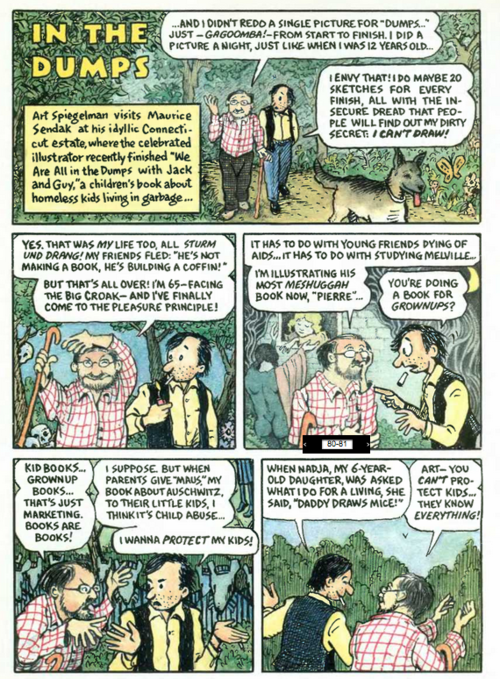
Read the whole thing at Blown Covers.
Blog: Schiel & Denver Book Publishers Blog (Login to Add to MyJacketFlap)
JacketFlap tags: Comics, Guilty Pleasures, Art Spiegelman, Garbage Pail Kids, ComicArts, Add a tag
 In the 1980s, the Garbage Pail Kids trading cards were so notorious that they were banned from select schools (well, mine) and were traded and pored over like some back-alley dice game at lunch (well, mine again). I will never know what happened to my stack of GPK cards, but I no longer have to wistfully imagine what “Clogged Duane” and “Dinah Saur” looked like, thanks to the recently published Garbage Pail Kids by Abrams ComicArts.
In the 1980s, the Garbage Pail Kids trading cards were so notorious that they were banned from select schools (well, mine) and were traded and pored over like some back-alley dice game at lunch (well, mine again). I will never know what happened to my stack of GPK cards, but I no longer have to wistfully imagine what “Clogged Duane” and “Dinah Saur” looked like, thanks to the recently published Garbage Pail Kids by Abrams ComicArts.
Upon delivery, my nearest neighbor immediately asked to borrow the book. The 220-plus page hardcover instantly triggers a lost sense of dark nostalgia in those who were kids in the mid-1980s. This book collects every card from Series 1-5, and it includes a five-page introduction by Art Spiegelman and a two-page afterword by artist John Pound. The rest of the pages are all GPK. Note that the characters had “alternate” cards—same image, different name—and those names are listed at the bottom of every page. The back matter for the cards is not reproduced outside of the front end papers, but the dust jacket is the same material as the old card packaging—and underneath lies a recognizable image of the pink rectangular gum that came in every pack.
Punny highlights for me were “Babbling Brooke” and “Nervous Rex” (lowlight: “Hot Scott”). In retrospect, I do see some cause for concern (sorry, 1986 self!), notably the drug references, stereotyping, and overall bad taste (but never so bad as how that gum fared—once chewed, twice shy). This hindsight makes Garbage Pail Kids an even better read. How did The Topps Company get away with some of these—see “Half-Nelson” and “Stoned Sean,” for example? It’s a fascinating retrospective, and Spiegelman’s involvement in the original series somehow lends credibility to it all.
“Snot was a good idea (gross bodily fluids were a staple of Topp’s sophisticated brand of humor),” Spiegelman writes in the introduction. “We all worked anonymously, since Topps didn’t want the work publicly credited…I was annoyed at the time, but my book publisher, Pantheon, was very relieved. The first volume of Maus was being prepared for publication while the GPKs were near the height of popularity.”
Maus went on to earn a Pulitzer Prize in 1992. A Pulitzer Prize-winning author and illustrator worked on the Garbage Pail Kids cards. You can say this aloud every time your neighbor asks to borrow your copy.
--Alex
Blog: A Fuse #8 Production (Login to Add to MyJacketFlap)
JacketFlap tags: Uncategorized, Maurice Sendak, William Joyce, Bob Staake, New Yorker, Raul Colon, Harry Bliss, Ian Falconer, Maira Kalman, Art Spiegelman, Marcellus Hall, Peter de Seve, Christoph Niemann, Barry Blitt, Gary Larson, Ana Juan, Roz Chast, Sempe, William Stieg, Bruce McCall, Edward Koren, George Booth, Istan Banyai, Add a tag
 My husband Matt pairs well with me for a number of reasons. Amongst them is our mutual inclination to collect things we love. As such, Matt has systematically been holding onto all his issues of The New Yorker ever since he got his subscription in college. Over the years these issues have piled up piled up piled up. I was a Serials Manager before I got my library degree and one of the perks of the job was getting lots of lovely magazine holders. For years these holders graced the tops of our bookshelves and even came along with us when we moved into our current apartment a year ago. Yet with the arrival of our puir wee bairn, we decided to do the unthinkable.
My husband Matt pairs well with me for a number of reasons. Amongst them is our mutual inclination to collect things we love. As such, Matt has systematically been holding onto all his issues of The New Yorker ever since he got his subscription in college. Over the years these issues have piled up piled up piled up. I was a Serials Manager before I got my library degree and one of the perks of the job was getting lots of lovely magazine holders. For years these holders graced the tops of our bookshelves and even came along with us when we moved into our current apartment a year ago. Yet with the arrival of our puir wee bairn, we decided to do the unthinkable.
Yes. We ripped off all their covers.
Well, most anyway. We have the complete run of New Yorker text on CD-ROM anyway, and anything published after the CD-ROM’s release would be online anyway. Thus does the internet discourage hoarding.
In the meantime, we now are the proud owners of only three boxes worth of New Yorker covers. They’re very fun to look at. I once had the desire to wallpaper my bathroom in such covers, but that dream will have to wait (as much as I love New York apartments and all . . .). For now, it’s just fun to flip through the covers themselves and, in flipping, I discovered something. Sure, I knew that the overlap between illustrators of children’s books and illustrators of New Yorkers was frequent. I just didn’t know how frequent it was. Here then is a quickie encapsulation of some of the folks I discovered in the course of my cover removal.
Istan Banyai
Zoom and Re-Zoom continue to circulate heavily in my library, all thanks to Banyai. I had a patron the other day ask if we had anything else that was similar but aside from Barbara Lehman all I could think of was Wiesner’s Flotsam. Banyai is well known in a different way for New Yorker covers, including this controversial one. As I recall, a bit of a kerfuffle happened when it was published back in the day.
Harry Bliss
Author and illustrator of many many picture books, it’s little wonder that the Art Editor of The New Yorker, Ms. Francoise Mouly, managed to get the man to do a TOON Book (Luke on the Loose) as well. And when it comes to his covers, this is the one I always think of first.
Blog: DRAWN! (Login to Add to MyJacketFlap)
JacketFlap tags: comics, style, cartooning, art spiegelman, pablo picasso, Add a tag
Art Spiegelman on Picasso, cave paintings and comics:
I was very suspicious of high culture, not of low, and it took a long time for me to crack the code and say, ‘You know what, Picasso’s a pretty good cartoonist.’This bit on style reminds me of Milton Glaser (“I don’t trust style.” and “The model for personal development is antithetical to the model for professional success.”):
Style is a capitalist invention. It’s a trademark. It’s very useful in the world of commerce to have a good trademark, but it wasn’t my first concern. I got restless…
Blog: illustration pages (Login to Add to MyJacketFlap)
JacketFlap tags: inspiration, Topps, Art Spiegelman, Owen Schumacher, Wacky Packages, Illustration Pages, Add a tag
Contributed by Owen Schumacher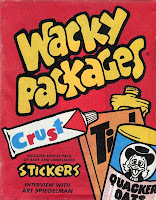 Preceding Topps' trading card series Garbage Pail Kids—an odd, adolescent phenomenon in its own right—there was the company's first foray into MAD-style parody: the throw-away humor of Wacky Packages. Partly conceived by a young Art Spiegelman—who went on to author the Pulitzer Prize-winning graphic novel, Maus [1972]—the series was a big hit in the early '70s, with its sales even eclipsing Topps' own baseball cards at one point.
Preceding Topps' trading card series Garbage Pail Kids—an odd, adolescent phenomenon in its own right—there was the company's first foray into MAD-style parody: the throw-away humor of Wacky Packages. Partly conceived by a young Art Spiegelman—who went on to author the Pulitzer Prize-winning graphic novel, Maus [1972]—the series was a big hit in the early '70s, with its sales even eclipsing Topps' own baseball cards at one point.
The gags were simple and even simple-minded: Blisterine, a fiery rip on Listerine; Jail-O, Jell-O's incarcerated cousin; and Land O Quakes, the only butter churned by—you guessed it—earthquakes. But the illustrations were always fun and beautiful, often painted by artist Norman Saunders, who illustrated many paperbacks and pulp magazines of the time. Conveniently, you won't have to scour the dark recesses of eBay to grab up all these cards, thanks to a fine hardbound volume called—what else?—Wacky Packages [2008]. Check out these whimsical highlights.
Blog: Children's Illustration (Login to Add to MyJacketFlap)
JacketFlap tags: Art Spiegelman, Add a tag
Blog: Children's Illustration (Login to Add to MyJacketFlap)
JacketFlap tags: lydia nichols, contest, Art Spiegelman, Add a tag
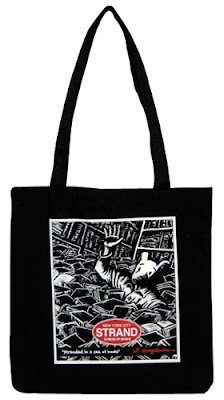 "The Strand's Tote Bag Design Contest has concluded. Thanks to all the artists who submitted their work! We will announce the winners on the Strand's homepage shortly."
"The Strand's Tote Bag Design Contest has concluded. Thanks to all the artists who submitted their work! We will announce the winners on the Strand's homepage shortly."
Thank you to Lydia Nichols . (The above tote is designed by Art Spiegelman. )
Blog: How To Be A Children's Book Illustrator (Login to Add to MyJacketFlap)
JacketFlap tags: News, American Library Association, David Sedaris, Jules Feiffer, Raw, Toon Books, Pictures worth a thousand words, Art Spiegelman, Eleanor Davis, Françoise Mouly, Geoffrey Hayes, Benny and Penny, "Maus", "Seven IMpossible Things Before Breakfast, "Stinky", Gahan Wilson, Maurice Sendark, Savannah College of Art and Design, Theodor Seuss Geisel Honor Book, Classics Illustrated Comic Books, Add a tag
“Graphic novels” for little bitty kids?
Comics for children age four and up?
Not such a preposterous idea. The intuitive narrative form of comics is a whole another kind of reading.
Searching words, pictures and panels for clues to events big and small in a story is a more active experience than watching video on a screen.
My “great books” education came from Classics Illustrated comics, which I loved. Did they ruin my appetite for dinner?
Heck no, I read plenty of real classics later. My readings of the actual Men Against the Sea, The Dark Frigate, King Solomon’s Mines, Frankenstein, David Copperfield, Dr. Jekyll and Mr. Hyde and so many more were only enhanced by my first reading their comic book counterparts.
(In many cases the comics reading was a richer experience than plowing through the actual classic texts. Maybe that says more about me than any literary works. However that’s a story for another post.)
Thank you, Albert Kanter for the great contribution you made to kid culture with the Classic Illustrated series that ran for 30 years beginning in 1941.
On that note, Toon Books, produced by Raw Junior, LLC , endeavors to make comics readers of toddlers and tots.
And who better to tease little ones with artful pictures and graphics into an early habit of reading than, well, another comic book publisher.
And, in this case, someone who is also a New Yorker magazine art director.
Françoise Mouly is a veteran of more than 800 New Yorker covers, a mom, and the co-founder and co-editor, with her husband cartoonist Art Spiegelman, of the avant garde comics anthology Raw Graphics. That’s where Spiegelman’s family account of the Holocaust, Maus, A Survivor’s Tale, that later won the Pulitzer Prize, first appeared. It was the first comic book to call itself a graphic novel .
Mouly also designed and edited books for Pantheon and Penguin in the late 1980’s and early 1990s. She was helping her first grade son with his reading. she discovered — to her dismay — “beginner reader” texts.
She substituted for their home reading sessions her giant collection of French comic books, and that worked like a charm. It got her thinking, and in 2000 she launched the RAW Junior division to publish “literary comics” for kids of all ages.
She enlisted star writers, artists and cartoonists such as Maurice Sendak, David Sedaris, Jules Feiffer and Gahan Wilson.
In 2008 she started the Toon Books imprint. These were 6″ by 9″ hard cover “comics” that very young children could read on their own.
“Comics have always had a unique ability to draw young readers into a story through the drawings,” Mouly told an interviewer. “Visual narrative helps kids crack the code that allows literacy to flourish, teaching them how to read from left to right, from top to bottom.”
“Comics use a broad range of sophisticated devices for communication,” the Toon Books website quotes Barbara Tversky, professor of Psychology at Stanford University and a Toon Books advisor.
“They are similar to face-to-face interactions, in which meaning is derived not solely from words, but also from gestures, intonation, facial expressions and props,” Tversky says. “Comics are more than just illustrated books, but rather make use of a multi-modal language that blends words, pictures, facial expressions, panel-to-panel progression, color, sound effects and more to engage readers in a compelling narrative.”
I like the Benny and Penny series by author illustrator Geoffrey Hayes, about sibling mice — a big brother and his little sister and do they ever ring true! In the latest title, The Big No-No, released this Spring, Benny and Penny confront the “new kid” next door.
In Just Pretend, Penny threatens to disrupt Benny’s make believe pirate game (because she needs a hug). But they somehow manage to play together. When Penny momentarily disappears in a game of hide and seek, Benny decides that pretending is better with his sister around than not.
Hayes has written and illustrated about 40 books, including early readers and a Margaret Wise Brown title, When the Wind Blew.
The Big No-No and Just Pretend are gently rendered in colored pencil and beautifully orchestrated and paced. The pages are a joy to experience. The little dialogue balloons are so natural and unobtrusive. The books give you the feeling that you’re eavesdropping on the real conversations of real children.
You can read a fascinating interview with Hayes on the Seven Impossible Things Before Breakfast blog.
I haven’t yet seen Stinky about a polka-dotted swamp monster whose turf gets invaded by a little boy. It’s creator is a 25 year old rising comics star Eleanor Davis, a recent graduate of the Savannah College of Art and Design. The American Library Association named Stinky its Theodor Seuss Geisel Honor Book for this year.
* * * * *
Mark Mitchell hosts “How To Be A Children’s Book Illustrator.” To sample some free lessons from his online course on children’s book illustration, go here.

Blog: How To Be A Children's Book Illustrator (Login to Add to MyJacketFlap)
JacketFlap tags: News, American Library Association, David Sedaris, Jules Feiffer, Pictures worth a thousand words, Art Spiegelman, Eleanor Davis, Françoise Mouly, Geoffrey Hayes, Benny and Penny, "Maus", "Seven IMpossible Things Before Breakfast, "Stinky", Classics Illustrated Comic Books. Raw, Gahan Wilson, Maurice Sendark, Savannah College of Art and Design, Theodor Seuss Geisel Honor Book, Toon Books, Add a tag
“Graphic novels” for little bitty kids?
Comics for children age four and up?
Not such a preposterous idea. The intuitive narrative form of comics is a whole another kind of reading: Searching panels and pictures along with words for clues to events big and small in the story is an immersion narrative experience. It’s more active than watching video on a screen.
My “great books” education came from Classics Illustrated comics, which I loved. Did they ruin my appetite for dinner?
Heck no, I read plenty of real classics later. My readings of the actual Men Against the Sea, The Dark Frigate, King Solomon’s Mines, Frankenstein, David Copperfield, Dr. Jekyll and Mr. Hyde and so many more were only enhanced by my first reading their comic book counterparts.
(In many cases the comics reading was a richer experience than plowing through the actual classic texts. Maybe that says more about me than any literary works. However that’s a story for another post.)
Thank you, Albert Kanter for the great contribution you made to kid culture with the Classic Illustrated series that ran for 30 years beginning in 1941.
On that note, Toon Books, produced by Raw Junior, LLC , endeavors to make comics readers of toddlers and tots.
And who better to tease little ones with artful pictures and graphics into an early habit of reading than, well, another comic book publisher.
Or more precisely a comics publisher/New Yorker magazine art director.
Françoise Mouly is a veteran of more than 800 New Yorker covers, a mom, and the co-founder and co-editor, with her husband cartoonist Art Spiegelman, of the avant garde comics anthology Raw Graphics. That’s where Spiegelman’s family account of the Holocaust, Maus, A Survivor’s Tale, that later won the Pulitzer Prize, first appeared. It was the first comic book to call itself a graphic novel .
Mouly also designed and edited books for Pantheon and Penguin in the late 1980’s and early 1990s. She was helping her first grade son with his reading. she discovered — to her dismay — “beginner reader” texts.
She substituted for their home reading sessions her giant collection of French comic books, and that worked like a charm. It got her thinking, and in 2000 she launched the RAW Junior division to publish “literary comics” for kids of all ages.
She enlisted star writers, artists and cartoonists such as Maurice Sendak, David Sedaris, Jules Feiffer and Gahan Wilson.
In 2008 she started the Toon Books imprint. These were 6″ by 9″ hard cover “comics” that very young children could read on their own.
“Comics have always had a unique ability to draw young readers into a story through the drawings,” Mouly told an interviewer. “Visual narrative helps kids crack the code that allows literacy to flourish, teaching them how to read from left to right, from top to bottom.”
“Comics use a broad range of sophisticated devices for communication,” the Toon Books website quotes Barbara Tversky, professor of Psychology at Stanford University and a Toon Books advisor.
“They are similar to face-to-face interactions, in which meaning is derived not solely from words, but also from gestures, intonation, facial expressions and props,” Tversky says. “Comics are more than just illustrated books, but rather make use of a multi-modal language that blends words, pictures, facial expressions, panel-to-panel progression, color, sound effects and more to engage readers in a compelling narrative.”
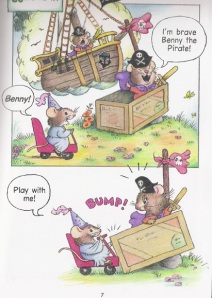
I like the Benny and Penny series by author illustrator Geoffrey Hayes, about sibling mice — a big brother and his little sister and do they ever ring true! In the latest title, The Big No-No, released this Spring, Benny and Penny confront the “new kid” next door.
In Just Pretend, Penny threatens to disrupt Benny’s make believe pirate game (because she needs a hug). But they somehow manage to play together. When Penny momentarily disappears in a game of hide and seek, Benny decides that pretending is better with his sister around than not.
Hayes has written and illustrated about 40 books, including early readers and a Margaret Wise Brown title, When the Wind Blew. The Big No-No and Just Pretend are gently rendered in colored pencil and beautifully orchestrated and paced. The pages are a joy to experience. The little dialogue balloons are so natural and unobtrusive. The books give you the feeling that you’re eavesdropping on the real conversations of real children.
You can read a fascinating interview with Hayes on the Seven Impossible Things Before Breakfast blog.
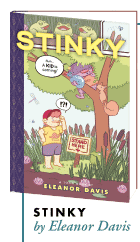 I haven’t yet seen Stinky about a polka-dotted swamp monster whose turf gets invaded by a little boy. It’s creator is a 25 year old rising comics star Eleanor Davis, a recent graduate of the Savannah College of Art and Design. The American Library Association named Stinky its Theodor Seuss Geisel Honor Book for this year.
I haven’t yet seen Stinky about a polka-dotted swamp monster whose turf gets invaded by a little boy. It’s creator is a 25 year old rising comics star Eleanor Davis, a recent graduate of the Savannah College of Art and Design. The American Library Association named Stinky its Theodor Seuss Geisel Honor Book for this year.
* * * * *
Mark Mitchell hosts “How To Be A Children’s Book Illustrator.” To sample some free lessons from his online course on children’s book illustration, go here.






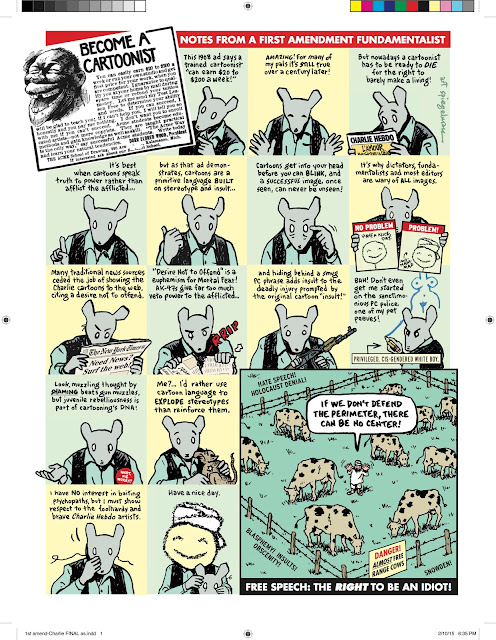


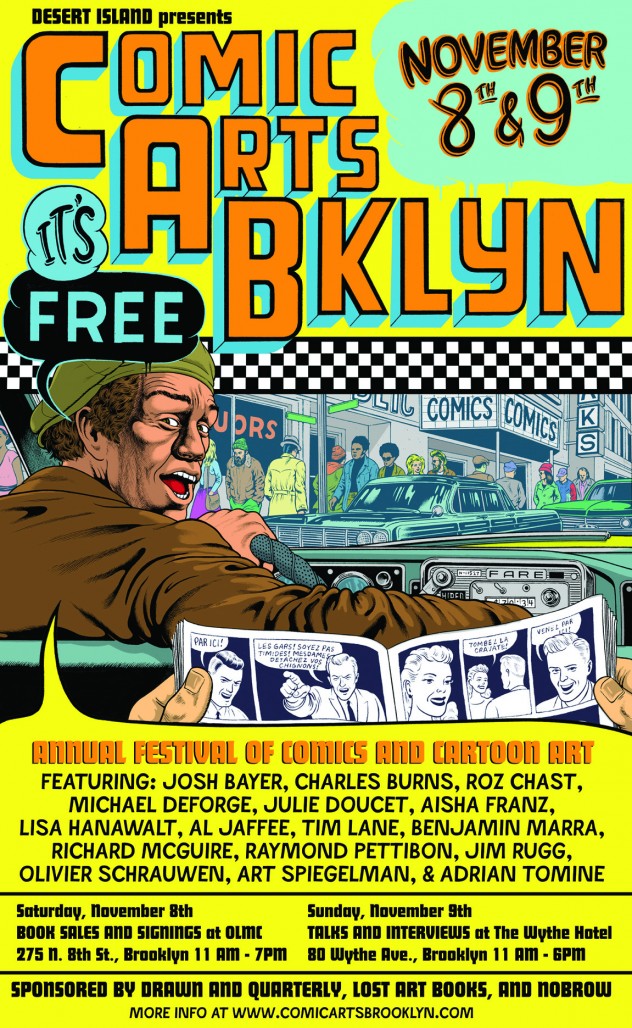
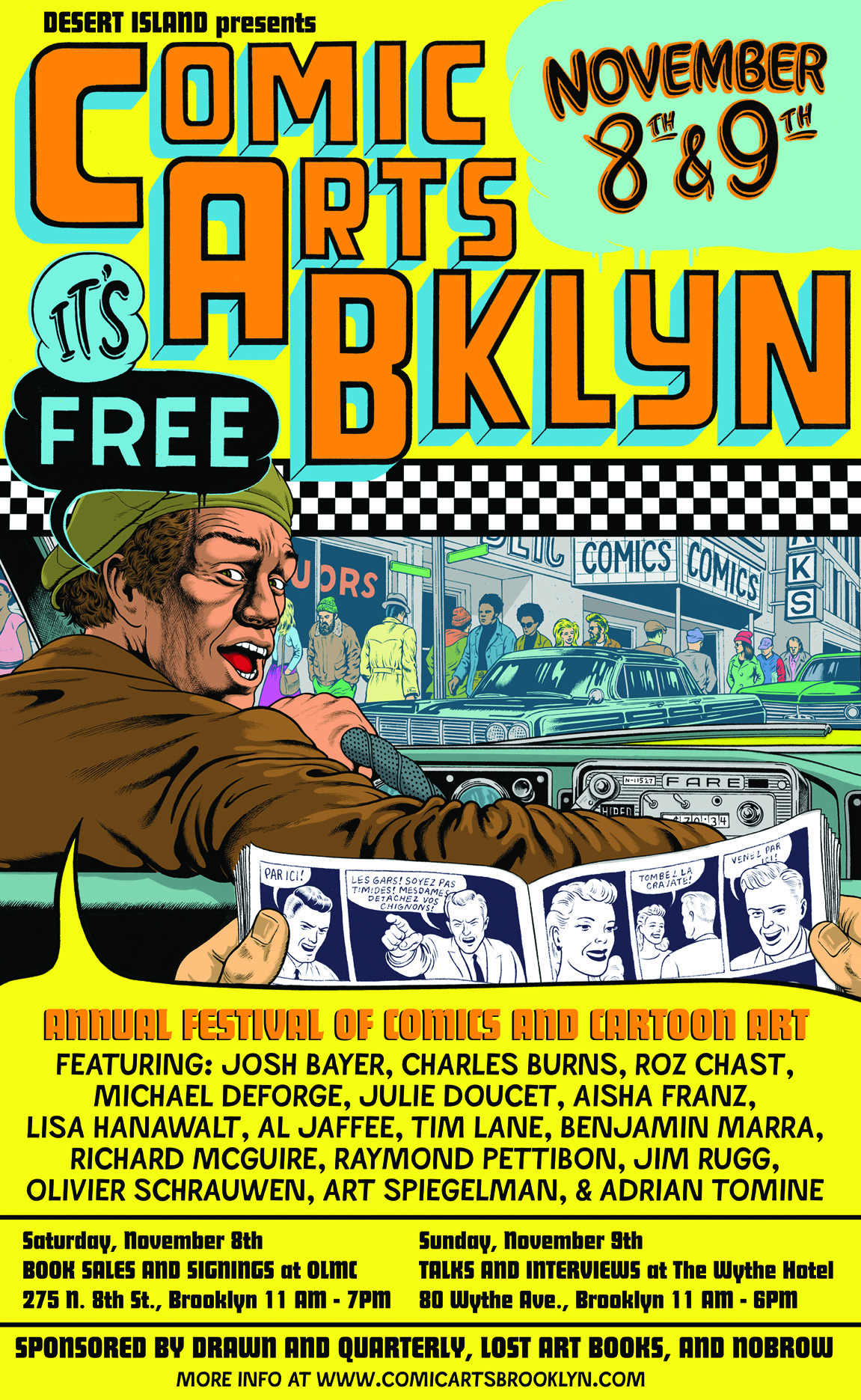



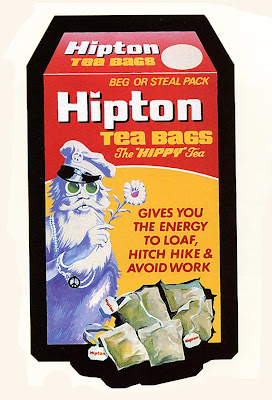
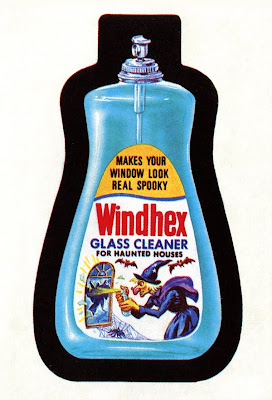
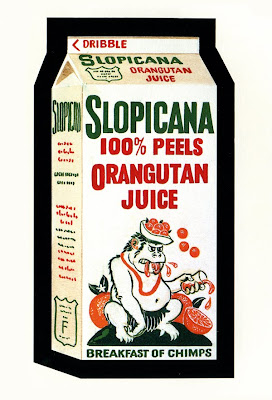
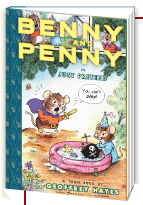
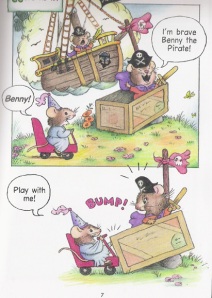
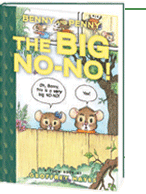
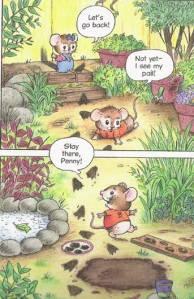
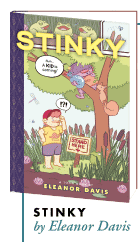
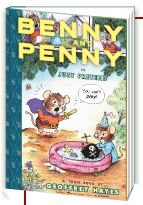
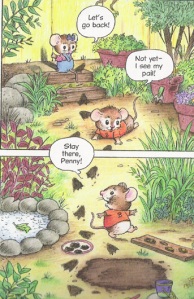


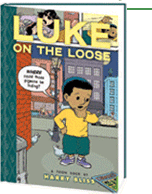
Thanks for the nice coverage, Alexander! Two things, though: I think you mean “genteel” in your headline, although the early newspaper strip artists were certainly Gentiles, as well. And the French cartoonist Francoise spoke of is merely “Fred”–Philemon is his character.
Thank you again for coming, and for the report!
Shows how much a Violet education has done for me, huh? Maybe I should have gone to school uptown. ;)
Thank you for the pointers and for all your hard work on the panels this weekend. It was wonderful, and I’m glad I was able to attend!